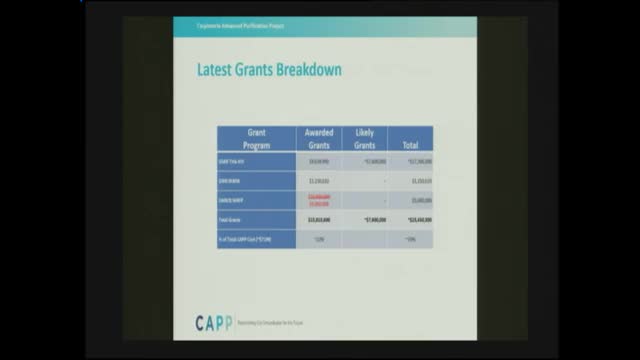State board cuts grant funding for local water projects to $5 million
April 11, 2024 | Carpinteria City, Santa Barbara County, California

This article was created by AI summarizing key points discussed. AI makes mistakes, so for full details and context, please refer to the video of the full meeting. Please report any errors so we can fix them. Report an error »

In the heart of Carpinteria, city officials gathered on April 10, 2024, to address pressing financial challenges facing the Carpinteria Valley Water District. The atmosphere was tense as discussions unfolded about significant budget cuts that have drastically altered the landscape of funding for local water projects.
A year ago, optimism filled the room as officials celebrated the prospect of securing over 50% of capital costs through grants. However, recent state budget cuts have reshaped that optimism into concern. The California State Board announced a reduction in grant funding from $15 million to just $5 million, impacting not only Carpinteria but also several other small communities. This decision, made on March 19, has left local leaders grappling with the implications of losing crucial financial support.
The meeting highlighted the stark reality for smaller districts like Carpinteria, which lack the extensive tax bases of larger cities such as Los Angeles and San Francisco. The loss of funding is expected to have a profound impact on the community, as officials expressed their frustration over the state’s decision to spread the financial pain across various projects.
Despite the setbacks, there was a glimmer of hope. Officials noted that if additional grant funding becomes available next year, projects that experienced cuts would be prioritized for reinstatement. However, this potential relief hinges on uncertain future tax revenues.
On a more positive note, the district is awaiting an announcement regarding federal funding through the U.S. Bureau of Reclamation’s Title 16 program. Previously awarded nearly $10 million, the district has applied for additional funds to cover rising project costs. The outcome of this request, expected by the end of April, could increase grant funding to over 30%, a much-needed boost amid the current financial strain.
The meeting also addressed the rising costs of capital projects, which have surged from an estimated $30 million to approximately $70 million. This escalation, attributed to inflation and changes in project scope, has forced officials to reconsider their financial strategies. The anticipated debt from these projects could rise significantly, with potential loans increasing from $22 million to nearly $48 million.
As the meeting concluded, the officials remained cautiously optimistic, hoping for favorable outcomes from both state and federal funding sources. The discussions underscored the ongoing challenges faced by small communities in securing necessary resources for vital infrastructure projects, leaving many to wonder how these financial hurdles will shape the future of water management in Carpinteria.
A year ago, optimism filled the room as officials celebrated the prospect of securing over 50% of capital costs through grants. However, recent state budget cuts have reshaped that optimism into concern. The California State Board announced a reduction in grant funding from $15 million to just $5 million, impacting not only Carpinteria but also several other small communities. This decision, made on March 19, has left local leaders grappling with the implications of losing crucial financial support.
The meeting highlighted the stark reality for smaller districts like Carpinteria, which lack the extensive tax bases of larger cities such as Los Angeles and San Francisco. The loss of funding is expected to have a profound impact on the community, as officials expressed their frustration over the state’s decision to spread the financial pain across various projects.
Despite the setbacks, there was a glimmer of hope. Officials noted that if additional grant funding becomes available next year, projects that experienced cuts would be prioritized for reinstatement. However, this potential relief hinges on uncertain future tax revenues.
On a more positive note, the district is awaiting an announcement regarding federal funding through the U.S. Bureau of Reclamation’s Title 16 program. Previously awarded nearly $10 million, the district has applied for additional funds to cover rising project costs. The outcome of this request, expected by the end of April, could increase grant funding to over 30%, a much-needed boost amid the current financial strain.
The meeting also addressed the rising costs of capital projects, which have surged from an estimated $30 million to approximately $70 million. This escalation, attributed to inflation and changes in project scope, has forced officials to reconsider their financial strategies. The anticipated debt from these projects could rise significantly, with potential loans increasing from $22 million to nearly $48 million.
As the meeting concluded, the officials remained cautiously optimistic, hoping for favorable outcomes from both state and federal funding sources. The discussions underscored the ongoing challenges faced by small communities in securing necessary resources for vital infrastructure projects, leaving many to wonder how these financial hurdles will shape the future of water management in Carpinteria.
View full meeting
This article is based on a recent meeting—watch the full video and explore the complete transcript for deeper insights into the discussion.
View full meeting
